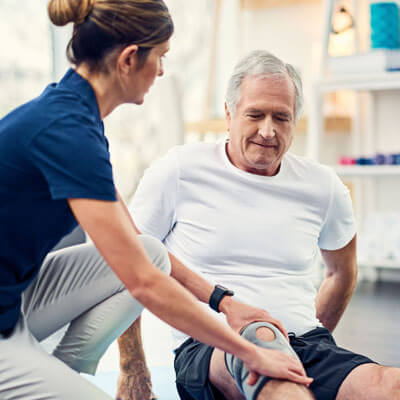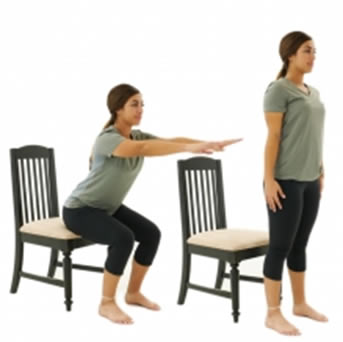 Fall prevention is an important component of any patient’s physical therapy treatment and home care routine. Researchers have proven that falls undermine a person’s health status and are increasingly difficult to recover from with age. As such, the history of a fall doubles a patient’s chances of having another fall, and one in five falls leads to a major injury such as a fractured bone or head injury.
Fall prevention is an important component of any patient’s physical therapy treatment and home care routine. Researchers have proven that falls undermine a person’s health status and are increasingly difficult to recover from with age. As such, the history of a fall doubles a patient’s chances of having another fall, and one in five falls leads to a major injury such as a fractured bone or head injury.
It’s very possible to prevent falls and minimize fall risks, you just need to know where to start. In this article, we’ll discuss steps to protect your body and health against falls with the help of physical therapy.
The following are common contributing factors to increased risk of falls:
- Balance issues
- Visual issues
- Polypharmacy
- Inadequate footwear
- Hazards at home such as dim lighting or slippery floors
Prevention
A 2016 randomized control trial demonstrated the effectiveness of physical therapy in preventing injurious falls by finding a statistically significant difference in the severity of falls between people undergoing physical therapy for fall prevention and those who were not [2]. Additionally, a 2015 study found improved balance and decreased fall risk across patients with osteoarthritis of the knee who were engaging in physical therapies, specifically strength training and balance work [3]. Since we see through research that physical therapy is effective in preventing falls, let’s talk about what kind of exercises help to prevent falls.
The goal of physical therapy in fall prevention is to increase strength and mobility for stability, especially with positional changes and walking. Because positional changes increase fall risk, it’s important to help strengthen the muscles that support us in the most common positional changes [4].
 One great exercise is the sit-to-stand exercise.
One great exercise is the sit-to-stand exercise.
For extra support, you may want to practice this exercise with a sturdy table or counter in front of you in case you need to grab on.
 Another great focus for exercises to prevent falls is balance. Balance work can look a variety of different ways, but it’s important to ensure that you are exercising in a hazard-free area with a study object to support you nearby in case you feel unsteady. This may mean balancing on one leg for 10 seconds while standing in front of your countertop or doing a toe touch and holding your foot on a step, which is shown below.
Another great focus for exercises to prevent falls is balance. Balance work can look a variety of different ways, but it’s important to ensure that you are exercising in a hazard-free area with a study object to support you nearby in case you feel unsteady. This may mean balancing on one leg for 10 seconds while standing in front of your countertop or doing a toe touch and holding your foot on a step, which is shown below.
Tips for Fall Prevention
- Eliminate trip hazards in the home
- Start small and build with your fall prevention exercises
- Practice positional changes slowly and with intention
- Ask for help when you know you need it
- Avoid walking in socks on slick surfaces
- Ask your physical therapist about actions you can take specific to your circumstances
Resources
[1] https://www.cdc.gov/falls/facts.html
[2] https://www.sciencedirect.com/science/article/abs/pii/S0003999317300795
[3] https://academic.oup.com/ageing/article/44/1/16/2812307
[4] https://www.hopkinsmedicine.org/health/wellness-and-prevention/fall-prevention-exercises
